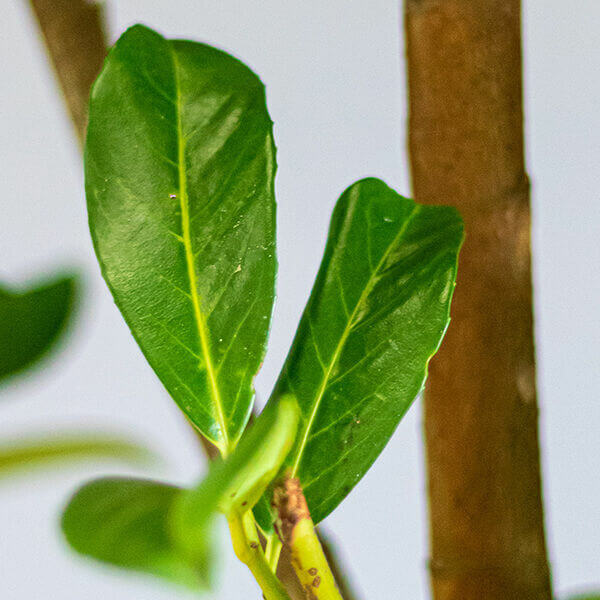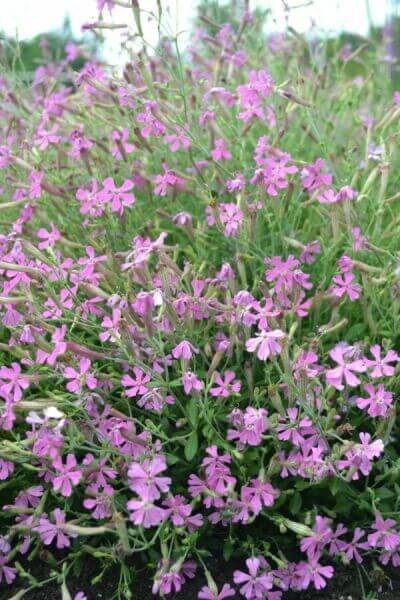Best Hedging Plants For Smooth Trimming
Best Hedging Plants For Smooth Trimming
Blog Article
Shade-tolerant Hedge Plants
Enhance your garden's allure with lush hedge varieties such as Yew (Taxus), Thuja, Laurel, Photinia, and Bamboo, celebrated for their structural stability and ecological advantages.
Yew and Thuja supply evergreen protection and winter season strength, while Laurel uses quick development and broad, aromatic leaves.
Photinia includes seasonal beauty with its lively red foliage, and Bamboo provides a low-maintenance, tranquil atmosphere.
These hedges enhance air quality, minimize sound, and produce tranquil, private spaces.
Proper planting, spacing, and maintenance make sure energetic development and eco-friendly harmony.
Explore how these lush ranges can raise your garden's appeal and wellness.
Key Takeaways
Transform Your Garden With Lush Hedge Ranges
- Select Yew for its thick, evergreen growth and unparalleled durability.
- Select Laurel for its fast growth and broad leaves, guaranteeing fast privacy.
- Choose Photinia for its lively seasonal foliage, which turns a striking dark red.
- Make use of Bamboo for a low-maintenance, winter-hardy hedge with aesthetic appeal.
- Space plants 2-3 per meter and prune frequently for ideal growth and health.
Popular Hedge Plants
When changing a garden with rich hedge varieties, it's essential to think about popular hedge plants such as Yew, Thuja, Laurel, and Photinia due to their unique attributes and benefits.
Yew (Taxus) is extremely esteemed for its durability and dense, green development, making it a prime choice for enduring landscapes.
Thuja is kept in mind for its evergreen foliage and robust winter durability.
Photinia includes seasonal vibrancy with red leaves that darken gradually, developing vibrant visual appeal.
Laurel provides quick growth and aromatic, broad leaves, ideal for quick personal privacy.
Additionally, Bamboo is an exceptional choice for ambiance, using a low-maintenance, winter-hardy option that improves the garden's visual with its stylish, swaying canes.
These selections deal with a variety of horticultural requirements and choices.
Benefits of Garden Hedges
Garden hedges provide a wide range of advantages, making them an important addition to any landscape. These natural barriers are cost-effective to execute and offer substantial wind protection, improving air flow and adding to sound decrease. The thick foliage of hedges like Thuja and Beech ensures personal privacy by blocking visibility, creating a peaceful and secluded environment.
Hedges also play an essential role in microclimate guideline, offering a stable environment that cultivates plant development and reduces temperature variations. Their complex leaf structures filter pollutants, enhancing air quality and adding to a healthier garden environment.
Furthermore, hedges master sound reduction, soaking up and deflecting sound waves to lower ambient noise levels. This double performance of providing both acoustic and visual privacy improves the overall serenity and aesthetic appeal of any garden.
Planting and Maintenance Tips
For an effective hedge, meticulous preparation of the planting location is vital. Guarantee the soil has proper pH and drainage to support strong root advancement.
Space the plants properly for the picked species. Water the hedge often throughout its initial development phase, adjusting as required with seasonal modifications.
Implement a methodical bug control and disease avoidance method, utilizing organic or chemical treatments when essential. Regularly examine for aphids, termites, and fungal infections.
Apply mulch to maintain moisture and suppress weeds. Seasonal pruning promotes dense growth and air flow, necessary for plant health.
Following these guidelines will help you cultivate a dynamic, well-kept hedge that boosts the appeal of your garden.
Spacing and Cutting Guidelines
Spacing and Cutting Standards
Proper spacing and trimming are essential for cultivating healthy, visually appealing hedges. Appropriate spacing makes sure each plant gets sufficient nutrients, light, and airflow.
Follow these standards for optimum hedge upkeep:
- Spacing: Position hedge plants 2-3 plants per meter to motivate robust development.
- Pruning Strategies: Routine pruning is necessary for keeping wanted hedge height and shape. Cut brand-new development in summertime and cut back older wood during winter.
- Seasonal Care: Adjust trimming techniques and schedules according to seasonal requirements to guarantee plant health.
- Hedge Height: Regularly monitor and cut to keep the preferred hedge height and accomplish uniform visual appeals.
Following these actions will ensure your hedge grows, boosting both the appeal and functionality of your garden.
Choosing the Right Hedge
Picking the Right Hedge
Choosing the suitable hedge involves examining aspects such as mature height, foliage density, and environmental strength. Successful hedge plant selection requires understanding each types' growth attributes and site-specific versatility.
For example, Yew (Taxus) offers exceptional longevity and thick growth, while Thuja is significant for its winter strength. Furthermore, thinking about upkeep requirements is essential; fast-growing types like Laurel or Privet demand routine trimming, whereas low-maintenance alternatives like Bamboo or Ivy might be more effective for those seeking very little upkeep.
Ecological factors such as soil type, light schedule, and moisture conditions must likewise guide the selection procedure. This cautious technique guarantees the picked hedges will thrive, offering both visual and functional advantages to the garden landscape.
Shipment and Planting Suggestions
To guarantee your hedge plants prosper, they should be provided by specialized couriers and planted promptly upon arrival.
Follow these essential steps for successful planting:
- Soil Preparation: Improve the soil with natural matter to improve drainage and nutrient content.
- Planting Depth: Develop a trench two times the width and equivalent to the depth of the root ball.
- Watering Techniques: Water thoroughly after planting, keeping the soil regularly wet however not saturated.
- Mulching: Apply a layer of mulch to maintain wetness and reduce weeds.
Customer Support and Service
Provided the important function of prompt help in horticultural pursuits, our customer support team is offered 6 days a week through telephone, e-mail, and social networks to use skilled advice and swiftly address any concerns. Their devotion to quick response times ensures customer complete satisfaction by dealing with inquiries associated with plant health, ideal planting techniques, and upkeep schedules.

Within 48 hours
This thorough support group, reinforced by a stellar 9.3/ 10 client score, highlights our dedication to boosting the gardening experience for every single customer.
Regularly Asked Concerns
The Length Of Time Does It Take for Hedge Plants to Develop?
Hedge plants usually need one to 3 years to end up being totally developed, with the specific period differing by types and growing conditions.
Efficient care during this crucial period is important for robust growth. Consistent watering, alert weed control, and proper fertilizer application are essential in promoting strong root advancement.
For example, fast-growing types like Laurel might develop more rapidly, while slower-growing varieties such as Yew might take longer. Diligent upkeep speeds up the establishment process, leading to healthy and thick hedges.
What Are the Best Hedge Plants for Privacy?
The concern of the finest hedge plants for privacy involves examining evergreen and deciduous choices.
Evergreen hedges like Thuja, Laurel, and Cypress offer year-round coverage, making sure constant privacy.
In contrast, deciduous hedges such as Beech use seasonal privacy, shedding leaves in colder months.
Secret maintenance tips for personal privacy hedges include routine trimming, fertilizing in spring, and appropriate spacing-- typically 2 to 3 plants per meter.
In addition, consistent watering and thorough weed removal are crucial for promoting healthy, thick growth.
Can Hedge Plants Bring In Wildlife to My Garden?
Yes, hedge plants can draw in wildlife to your garden by providing necessary benefits like shelter, food, and nesting websites, thus boosting local biodiversity. Yew, holly, and laurel are outstanding for bring in birds, while ivy supports a variety of bugs.
However, it is necessary to keep in mind that there are some downsides, such as increased maintenance to handle pests and regular maintenance. Carefully choosing and keeping hedge varieties can help stabilize these advantages and disadvantages, ultimately cultivating a vibrant and sustainable environment in your garden.
Exist Any Flowering Hedge Plants Available?
Yes, there are flowering hedge plants offered that can boost the beauty of your garden.
For example, Elaeagnus, also referred to as Olive Willow, produces aromatic white flowers in the fall, adding a touch of elegance.
Photinia, another popular choice, showcases lively red leaves that develop into an abundant green, developing a vibrant visual result throughout the seasons.
To ensure these plants flourish, it's vital to practice correct pruning techniques and seasonal maintenance, such as trimming new growth in the summertime and cutting down in the winter season.
These procedures will assist maintain the health and aesthetic appeal of your flowering hedges.
How Do I Prevent Bugs in My Hedge Plants?
To prevent pests in hedge plants, employ natural pest control methods and maintain appropriate hedge care. Introduce advantageous bugs like ladybugs, which take advantage of hazardous insects, to create a balanced ecosystem.
Regularly inspect your hedges for get more info signs of infestation and promptly remove any afflicted parts to prevent the spread. Guarantee the health of your hedges by applying balanced fertilizers and providing adequate water.
Make use of mulching to maintain soil wetness and appropriate spacing to decrease plant stress and promote robust development. These practices jointly help in reducing pest concerns and keeping a healthy hedge.
Conclusion
In essence, selecting the right hedge ranges such as Yew, Thuja, and Laurel can change any garden into a relaxing haven. These plants provide year-round plant, improve aesthetic appeal, and deal useful benefits like sound decrease and wind protection.
Correct planting methods, accurate spacing, constant watering, and seasonal trimming are vital for optimum growth.
Reliable shipment services and expert consumer support make sure a smooth experience from purchase to planting, making it easier than ever to elevate your outside space.
Garden hedges provide a wide range of advantages, making them a valuable addition to any landscape. These natural barriers are cost-efficient to execute and provide significant wind security, enhancing air flow and contributing to noise decrease. The thick foliage of hedges like Thuja and Beech makes sure privacy by blocking visibility, producing a serene and secluded environment.

Pruning Methods: Regular pruning is necessary for preserving desired hedge height and shape. Cut brand-new growth in summer season and cut back older wood during winter.
Report this page